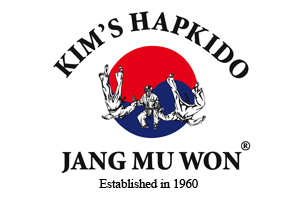Welcome to Kim’s Hapkido!
At Kim’s Hapkido, we teach Jang Mu Won Hapkido which was founded by Grandmaster Chong Sung Kim. Jang Mu Hapkido emphasizes timing and precision in the execution of techniques with great devotion to detail. Grandmaster has often stated that the difference between mediocre technique and outstanding, effective technique is paper thin. Jang Mu Won Hapkido teaches techniques that are readily applied by students in any situation.
Contact Kim’s Hapkido for Dojo, Hapkido, Karate, Karate Classes For Kids, Kickboxing, Martial Arts, Self Defense, Self Defense Classes, Self Defense For Women, and Taekwondo. Proudly supporting the areas of Alhambra, Altadena, Arcadia, Glendale, Los Angeles, Pasadena, San Gabriel, San Marino, South Pasadena, Yucaipa and surrounding areas.
CONTACT US TODAY FOR MORE INFORMATION
Contact Kim’s Hapkido for Dojo in Los Angeles, Hapkido in Los Angeles, Karate in Los Angeles, Karate Classes For Kids in Los Angeles, Kickboxing in Los Angeles, Martial Arts in Los Angeles, Self Defense in Los Angeles, Self Defense Classes in Los Angeles, Self Defense For Women in Los Angeles, Taekwondo in Los Angeles, and in surrounding areas.
Below is some general information about Los Angeles:
Los Angeles, often known by its initials L.A., is the most populous city in the U.S. state of California and the second most populous in the United States, after New York City, with a population at the 2010 United States Census of 3,792,621 It has an area of 469 square miles (1,215 km2), and is located in Southern California. The city is the focal point of the larger Los AngelesÃLong BeachÃSanta Ana metropolitan statistical area and Greater Los Angeles Area region, which contain 12,828,837 and nearly 18 million people respectively as of 2010, making it one of the most populous metropolitan areas in the world and the second largest in the United States. Los Angeles is also the seat of Los Angeles County, the most populated and one of the most ethnically diverse counties in the United States, while the entire Los Angeles area itself has been recognized as the most diverse of the nation’s largest cities. The city’s inhabitants are referred to as “Angelenos.”
Los Angeles was founded on September 4, 1781, by Spanish governor Felipe de Neve. It became a part of Mexico in 1821 following the Mexican War of Independence. In 1848, at the end of the MexicanÃAmerican War, Los Angeles and the rest of California were purchased as part of the Treaty of Guadalupe Hidalgo, thereby becoming part of the United States. Los Angeles was incorporated as a municipality on April 4, 1850, five months before California achieved statehood.
Nicknamed the City of Angels, Los Angeles is a leading world center of business, international trade, entertainment, culture, media, fashion, science, sports, technology, and education, and has been ranked the third richest city and fifth most powerful and influential city in the world. The city is home to renowned institutions covering a broad range of professional and cultural fields and is one of the most substantial economic engines within the United States. The Los Angeles combined statistical area (CSA) has a gross metropolitan product (GMP) of $831 billion (as of 2008), making it the third largest economic center in the world, after the Greater Tokyo and New York metropolitan areas. As the home base of Hollywood, it is also known as the “Entertainment Capital of the World,” leading the world in the creation of motion pictures, television productions, stage productions, video games, and recorded music. The importance of the entertainment business to the city has led many celebrities to call Los Angeles and its surrounding suburbs home. Additionally, Los Angeles hosted the Summer Olympic Games in 1932 and 1984.
The city is divided into over 80 districts and neighborhoods, many of which were incorporated places or communities that were annexed by the city. Greater Los Angeles includes a number of enclaves and nearby communities. Generally, the city is divided into the following areas: Downtown Los Angeles, East Los Angeles and Northeast Los Angeles, South Los Angeles, the Harbor Area, Greater Hollywood, Wilshire, the Westside, and the San Fernando and Crescenta Valleys.
Important landmarks in Los Angeles include Walt Disney Concert Hall, the Cathedral of Our Lady of the Angels, Angels Flight, the Kodak Theatre, the Griffith Observatory, the Getty Center, the Getty Villa, the Los Angeles Memorial Coliseum, the Los Angeles County Museum of Art, Grauman’s Chinese Theatre, the Hollywood Sign, the Bradbury Building, Hollywood Boulevard, the Capitol Records Building, Los Angeles City Hall, the Hollywood Bowl, the Theme Building, the Watts Towers, the Staples Center, Dodger Stadium, and La Placita Olvera/Olvera Street.
Source: Los Angeles on Wikipedia

